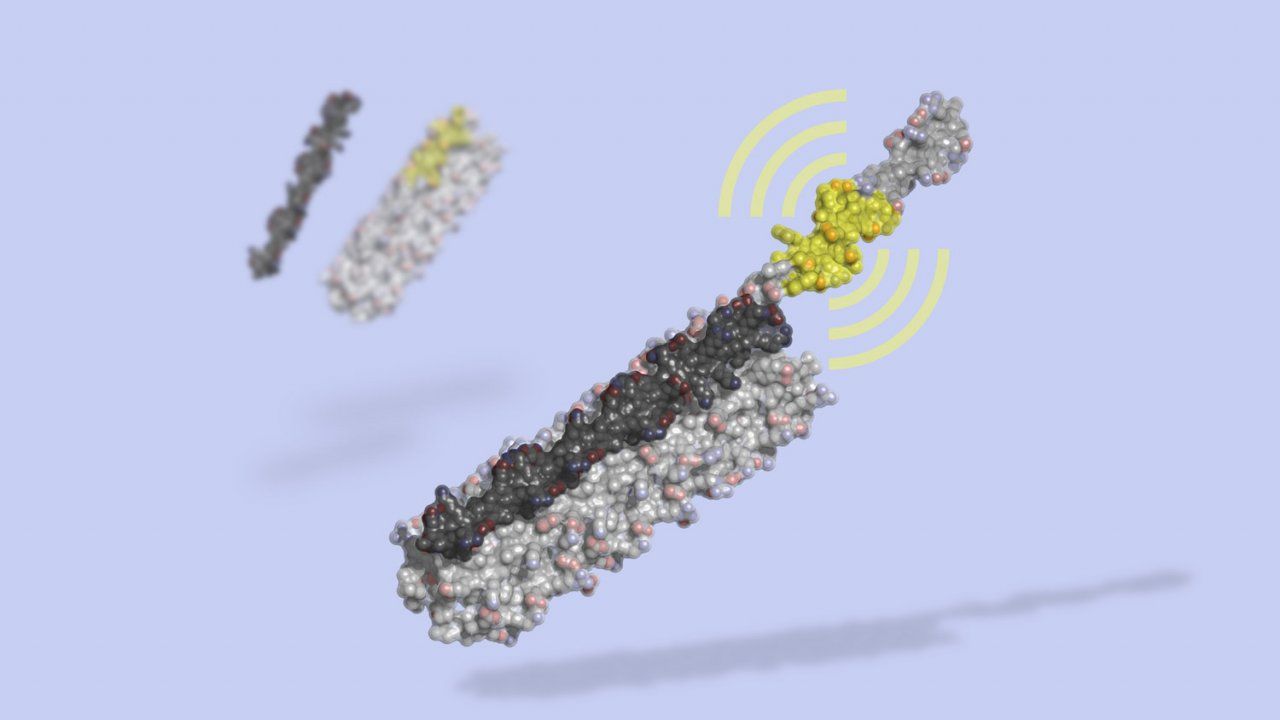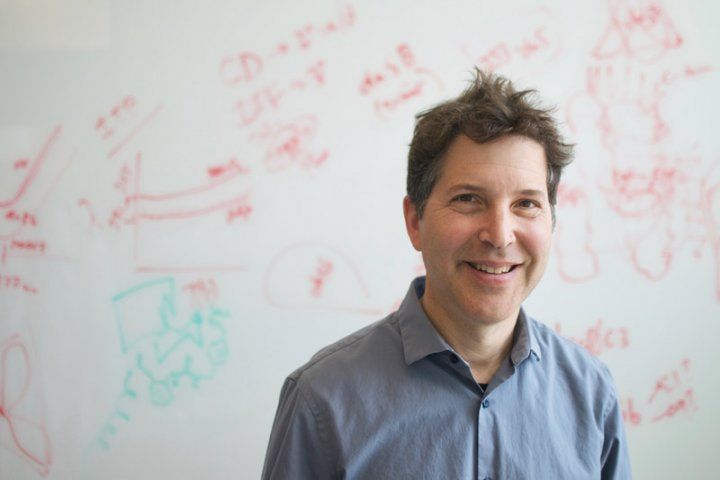
Medicine has a “Goldilocks” problem. Many therapies are safe and effective only when administered at just the right time and in very precise doses – when given too early or too late, in too large or too small an amount, medicines can be ineffective or even harmful. But in many situations, doctors have no way of knowing when or how much to dispense.
Now, a team of bioengineers led by UC San Francisco’s Hana El-Samad, PhD, and the University of Washington’s David Baker, PhD, have devised a remarkable solution to this problem – “smart” cells that behave like tiny autonomous robots which, in the future, may be used to detect damage and disease, and deliver help at just the right time and in just the right amount.

Amazingly, this can be accomplished without any direct human intervention thanks to a first-of-its-kind artificial protein – designed on a computer and synthesized in the lab – that can be used to build brand-new biological circuits inside living cells. These circuits transform ordinary cells into smart cells that are endowed with remarkable abilities.
This new protein, formally known as the Latching Orthogonal Cage-Key pRotein, or LOCKR, is described in a pair of papers published July 24 in the journal Nature. And it’s unlike anything biologists – or nature itself – has ever devised.
“While many tools in the biotech arsenal employ naturally occurring molecules that were repurposed for use in the lab, LOCKR has no counterpart in nature,” said El-Samad, the Kuo Family Professor of Biochemistry and Biophysics at UCSF and co-senior author of the new studies. “LOCKR is a biotechnology that was conceived of and built by humans from start to finish. This provides an unprecedented level of control over the way the protein interacts with other components of the cell, and will allow us to begin tackling unsolved – and previously unsolvable – problems in biology, with important implications for medicine and industry.”
In its structure, LOCKR resembles a barrel that, when opened, reveals a molecular arm that can be engineered to control virtually any cellular process. In the first of the two new papers, the researchers describe arms that can direct molecular traffic inside cells, degrade specific proteins, and initiate the cell’s self-destruct process.

But there’s a catch – literally. LOCKR’s arm remains hidden until the barrel is opened. As the protein’s name suggests, the barrel stays closed until it encounters a molecular “key” – a protein designed by scientists to fit perfectly into the barrel’s “lock” – that opens it up. In the absence of a key, LOCKR is, in effect, switched off, and the key switches it on.
The ability to control when LOCKR is “on” or “off” means that it behaves a lot like an electric switch. Though switches may seem simple, even primitive, highly miniaturized switches are the basic building block of all modern electronics, including the complex integrated circuits that power computers, iPhones, and every other smart gadget. With LOCKR, a switch-like protein, scientists can finally build the biological equivalent of such circuits inside cells.
“In the same way that integrated circuits enabled the explosion of the computer chip industry, these versatile and dynamic biological switches could soon unlock precise control over the behavior of living cells and, ultimately, our health,” said El-Samad, who is also a Chan Zuckerberg Biohub Investigator.
In the second of the two papers, the researchers describe an impressive demonstration of the technology’s circuit-building potential. Using a version of the tool called degronLOCKR, which can be switched on and off to degrade a protein of interest, they constructed circuits that were able to dynamically regulate cellular activity in response to cues from the cell’s internal and external environment.
In the same way that integrated circuits enabled the explosion of the computer chip industry, these versatile and dynamic biological switches could soon unlock precise control over the behavior of living cells and, ultimately, our health.
HANA EL-SAMAD, PHD
When the circuits, which included a genetically encoded sensor, detected a disruption of normal cell activity, degronLOCKR responded by destroying the proteins that direct the cellular “software” that caused the disruption, until the cell returned to normal – a process reminiscent of how thermostats continually sense ambient temperature and direct HVAC systems to shut off or turn on to maintain a desired temperature.
But using degronLOCKR to construct new biological circuits like this in cells is more than a bioengineering parlor trick. According to Andrew Ng, PhD, a co-first author of the two studies who recently completed his doctoral research in El-Samad’s lab, the technology’s potential is virtually limitless.
“LOCKR, and more specifically, degronLOCKR, opens a whole new realm of possibility for programming cells to treat a wide range of debilitating conditions for which safe and effective treatments are not yet available,” said Ng, who worked with El-Samad through the UC Berkeley–UCSF Graduate Program in Bioengineering. “With these technologies, we are constrained only by our imagination.”
To that end, El-Samad, Ng and their collaborators are now building degronLOCKR-based smart cells that could treat a variety of diseases and ailments, including traumatic brain injury (TBI) – a condition that exemplifies medicine’s Goldilocks problem.
When the brain incurs a traumatic injury, the body responds by activating a vigorous inflammatory response. Though inflammation is an essential part of the body’s healing process, in TBI, inflammation levels can far exceed what’s necessary, or even healthy. In many cases of TBI, inflammation reaches dangerous levels that leave the brain permanently damaged.
Though doctors can administer drugs to manage this situation, they often cause inflammation to plummet to levels so low that they impede proper brain healing. With TBI, neither the body’s own defenses nor modern medicine can achieve the “just right” Goldilocks level of inflammation – not too high, not too low, but enough to maximize healing without causing permanent damage.
That’s where degronLOCKR can help. The researchers think they’ll soon be able to transform a patient’s own cells into smart cells by installing degronLOCKR-based circuits that are designed to sense inflammation and modulate the activity of the immune system. The hope is that when these engineered cells are returned to patient’s body, they’ll keep inflammation well within the narrow therapeutic zone.
But TBI isn’t the only condition the scientists are tackling with this technology. El-Samad thinks that smart cells could one day be deployed to treat a wide range of diseases that are currently untreatable, from cancers that are impervious to the latest drugs and cell therapies to autoimmune diseases for which no therapies are yet available.
“By using degronLOCKR and similar molecules that are slated for future development, we’ll be able to compose increasingly sophisticated circuits, which may very well usher in a new generation of smart, precise and robust live cell therapies,” El-Samad said.
By Jason Alvarez
ucsf.edu


